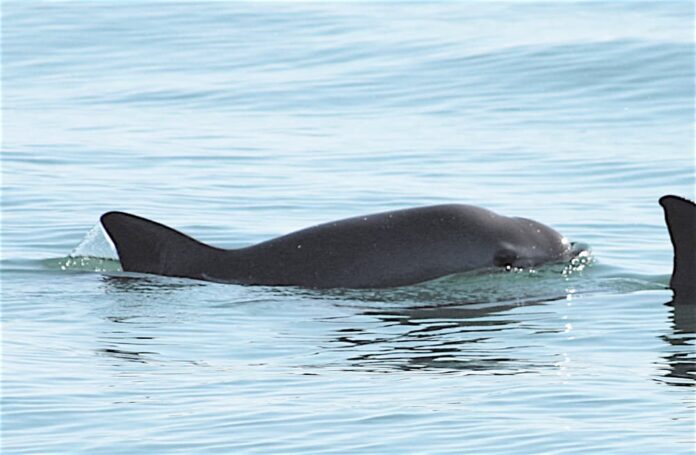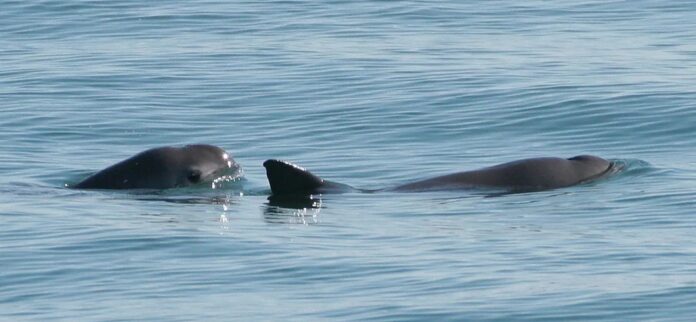Vaquita is not only the smallest porpoise species but also the critically endangered species on the IUCN Red List. Also, vaquita means “little cow” in Spanish. This cetacean is the least known as well, and not many people actually know much about porpoises. Being one of the world’s rarest marine mammals, it is also understandable why they are on the edge of extinction. We should raise more awareness about them before they are gone from the world. And if this is the first time you have heard about the vaquita, feel free to learn more below.
1Appearance

Being the smallest cetacean and porpoise species, a vaquita grows to only around 140 centimeters (male) and 150 centimeters (female). Despite being quite small, this porpoise has an unusually strong and tall body with a triangular fin and a round head. A vaquita has a large dark ring around its eyes along with dark patches on its lips. Together, they form a thin line from the mouth to the pectoral fins of the mammal. As for its dorsal surface, it is dark gray in color while the sides are pale gray. The underside of a vaquita is white with long light gray markings.
2Behavior

Vaquitas are shy animals so they usually avoid boats with active engines as well as people. And since they spend most of their time under the water, seeing one is also uncommon. As a solitary animal, vaquitas often hang out alone but a small group of 10 have been observed. If you see them in pairs, it is usually a mother with her calf. Speaking of mothers, their pregnancy lasts from 10 to 11 months and they give birth to a single calf every year. Mother vaquitas nurse their calf for 6 to 8 months until they are independent.
3Feeding & Habitats
This porpoise species is endemic to the northern end of the California Gulf in Baja California, Mexico. They live in shallow and turbid waters of less than 150 meters deep where they forage for various meals. Their menu consists of a variety of crustaceans, ground-dwelling fish, and squids along with benthic fish such as croakers and grunts.
4Threats
Where they live, it is abundant in fish and shrimps, and residents there depend on fishing for their livelihood. While it is illegal to fish there, people are still doing it and the activities affect vaquitas greatly. Vaquitas are often caught and drowned in gill nets used by illegal fishing operations in marine protected areas. Such things occur within Mexico’s Gulf of California, leading to their drastic population drop.
Other threats are habitat alteration and pollution from runoff that leads to exposure to toxic compounds. Vaquitas are not doing well because their numbers are few and they cannot replenish their population fast enough. Simply put, the ones that are dying are faster than the ones coming into the world. And soon enough, vaquitas will probably be extinct.
Related Post: Killer Whale Facts




